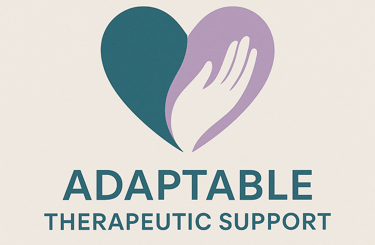How Breathing Can Support Trauma Recovery
Learn how breathing supports trauma recovery by calming the nervous system, restoring safety, and reconnecting body and mind through gentle, trauma-informed practices.
When healing from trauma, we often focus on the mind — our thoughts, memories, and emotions. But one of the most powerful tools for recovery lies within the body itself: the breath.
Something as simple and natural as breathing can play a profound role in calming the nervous system, restoring a sense of safety, and helping the body learn that it’s okay to relax again.
In this post, we’ll explore how trauma affects the way we breathe, why breathwork can be healing, and a few gentle practices to help you reconnect with your body through the breath.
How Trauma Affects the Breath
When we experience something frightening or overwhelming, our body’s instinct is to protect us.
The fight, flight, freeze, or fawn response kicks in, and our breathing changes immediately — often becoming shallow, rapid, or held altogether.
Over time, if the nervous system stays in survival mode, this altered breathing pattern can become habitual.
You might notice:
Holding your breath without realising it
Feeling tightness in the chest or throat
Difficulty taking a full, deep breath
Feeling anxious, dizzy, or “on edge” when trying to relax
These are all signs that your body is still bracing — as if the danger hasn’t completely passed.
The breath becomes restricted not because something is wrong with you, but because your body has learned that stillness can feel unsafe.
The Breath–Body–Brain Connection
Breathing isn’t just a physical act — it’s directly linked to the autonomic nervous system, which regulates your body’s stress and relaxation responses.
Fast, shallow breathing signals the brain to stay alert — preparing you for action.
Slow, deep breathing activates the parasympathetic nervous system — the “rest and digest” response — which tells your body it’s safe to relax.
This means that how you breathe can change how you feel.
When you intentionally slow and deepen your breath, you send a message to your brain: “I’m safe now.”
Over time, this can help re-train your nervous system to shift out of survival mode and back into balance.
Why Breathwork Supports Trauma Recovery
For people healing from trauma, breathwork isn’t just about relaxation — it’s about reclaiming agency over the body.
Trauma can leave us feeling disconnected or out of control. The breath is something you can influence in real time — a gentle way to anchor yourself in the present moment.
Regular, mindful breathing:
Calms the stress response
Increases feelings of grounding and safety
Improves emotional regulation
Supports sleep and digestion
Helps integrate body-based trauma therapy work
Over time, conscious breathing helps you reconnect with your body in a way that feels empowering rather than overwhelming.
Gentle Breathing Practices for Trauma Recovery
If you’re exploring breathwork as part of your healing, it’s important to go slowly and listen to your body.
Start with practices that feel grounding, not activating.
Here are a few simple, trauma-informed techniques:
1. The Grounding Breath
Place one hand on your chest and one on your belly.
Notice where your breath naturally goes — no need to change it yet.
Then, gently invite the breath to move toward the belly, feeling your hand rise slightly.
Breathe in through your nose for a count of four, and exhale through your mouth for a count of six.
Repeat for a few rounds, focusing on the steady rhythm.
2. Exhale to Settle the Nervous System
If deep breathing feels too much, simply focus on lengthening your exhale.
A long, slow out-breath tells your body to release tension and switch on the calming system.
3. Box Breathing (for Calm and Focus)
Breathe in for 4 counts → Hold for 4 → Exhale for 4 → Hold for 4.
This structured rhythm helps create stability and calm when you feel anxious.
4. Sighing It Out
A gentle sigh releases held tension in the chest and diaphragm.
Inhale naturally through the nose, then exhale with a soft sigh.
This can help discharge subtle stress energy from the body.
When Breathwork Feels Hard
It’s completely normal if breathwork feels uncomfortable at first.
For trauma survivors, slowing down and noticing the body can sometimes bring up anxiety or emotion.
If that happens:
Take a break — return to normal breathing.
Try grounding through touch (press your feet into the floor, hold something textured).
Remember, there’s no “right” way to breathe.
Work with a trauma-informed therapist who can guide you safely through body-based practices.
Breathwork should never feel forced — it’s about reconnecting gently and at your own pace.
Healing Through the Breath
Your breath is always with you — quiet, steady, and accessible.
It can be both a grounding anchor and a bridge between body and mind.
As you learn to breathe with awareness, you also teach your body that safety and calm are possible again.
Healing doesn’t happen all at once. But each slow, steady breath is a small reminder:
I am here. I am safe. My body and mind can work together again.
If You’d Like to Explore Trauma-Informed Breathwork
If you’re curious about integrating gentle breathing and body awareness into your trauma recovery journey, I offer trauma-informed therapy and guided practices that support nervous system regulation and emotional healing.
Together, we can find the techniques that feel right for you — grounded, safe, and restorative.
[breathing for trauma recovery, trauma and breathwork, nervous system regulation, trauma-informed breathing, body-based therapy, grounding techniques, breathwork for healing, mind-body connection, trauma recovery tips, how breathing helps anxiety]
Darwin, NT - with virtual services nationally
info@adaptablesupport.com
© 2025. All rights reserved.
